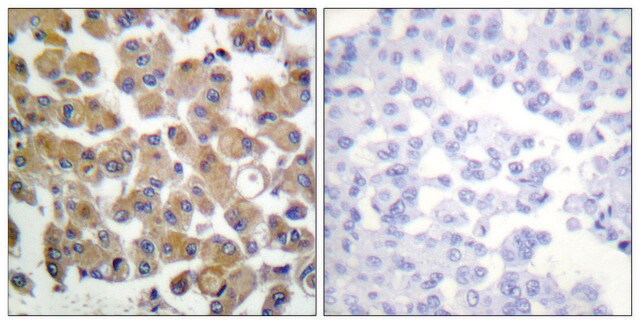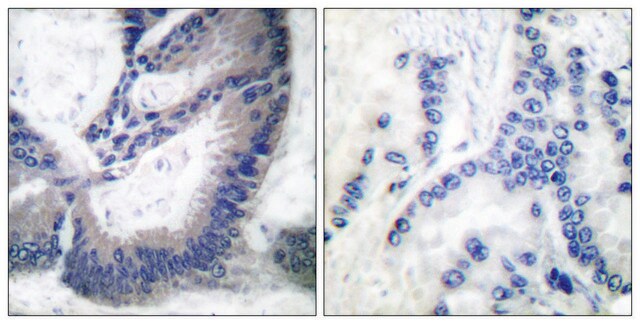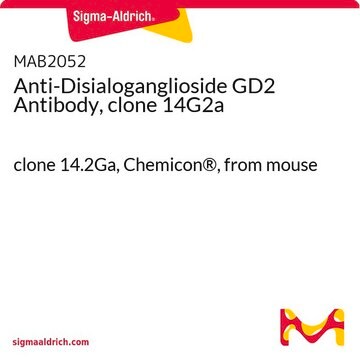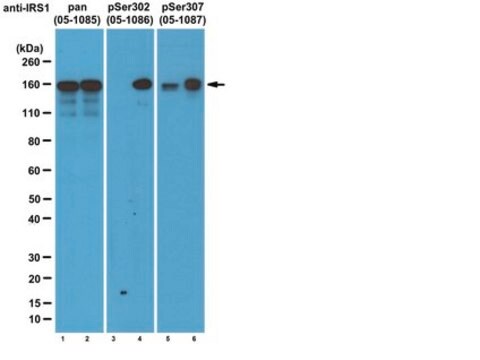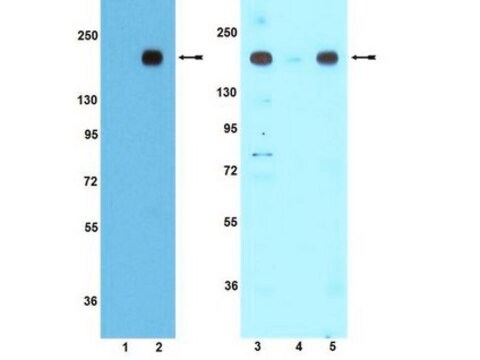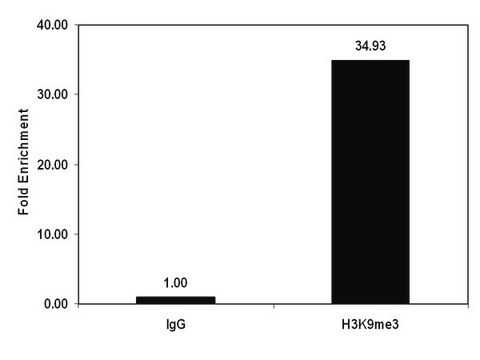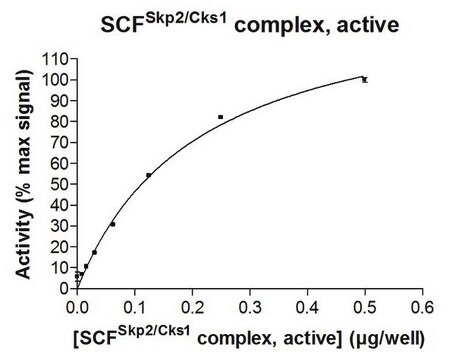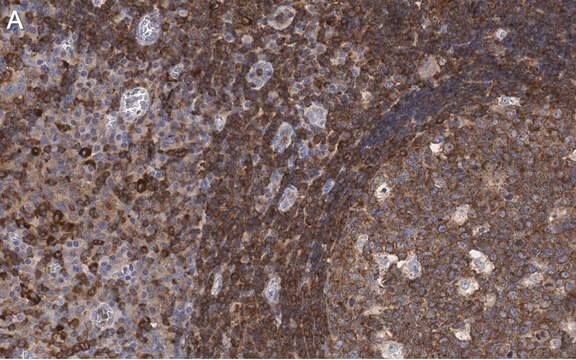General description
Insulin receptor substrate (IRS) molecules are key mediators in insulin signaling and play a central role in maintaining basic cellular functions such as growth, survival, and metabolism. They act as docking proteins between the insulin receptor and a complex network of intracellular signaling molecules containing Src homology 2 (SH2) domains. Four members (IRS-1, IRS-2, IRS-3, IRS-4) of this family have been identified that differ as to tissue distribution, subcellular localization, developmental expression, binding to the insulin receptor, and interaction with SH2 domain-containing proteins. Results from targeted disruption of the IRS genes in mice have provided important clues to the functional differences among these related molecules, suggesting they play different and specific roles in vivo. The available data are consistent with the notion that IRS-1 and IRS-2 are not functionally interchangeable in tissues that are responsible for glucose production (liver), glucose uptake (skeletal muscle and adipose tissue), and insulin production (pancreatic β cells). In fact, IRS-1 appears to have its major role in skeletal muscle whereas IRS-2 appears to regulate hepatic insulin action as well as pancreatic β cell development and survival. By contrast, IRS-3 and IRS-4 genes appear to play a redundant role in the IRS signaling system. Defects in muscle IRS-1 expression and function have been reported in insulin-resistant states such as obesity and type 2 diabetes.
Specificity
Predicted to cross react with mouse and rat based on 100% sequence homology.
Recognizes phospho-IRS1 (Tyr628) mouse/ (Tyr632) human
Immunogen
peptide corresponding to amino acids encompassing and including phosphorylated Tyr628 in mouse and Tyr632 in human of IRS1
Application
Anti-phospho-IRS1 (Tyr628) mouse/ (Tyr632) human Antibody is an antibody against phospho-IRS1 (Tyr628) mouse/ (Tyr632) human for use in WB.
Research Category
Signaling
Research Sub Category
Insulin/Energy Signaling
Quality
routinely evaluated by western blot on lysates from untreated and insulin-treated (30 minutes) HEK 293 cells
Target description
170 kDa
Physical form
Affinity purified
Affinity purified rabbit polyclonal IgG in storage buffer containing PBS with 0.05% sodium azide in 50% glycerol.
Format: Purified
Storage and Stability
Maintain for 2 years at -20°C from date of shipment. Aliquot to avoid repeated freezing and thawing. For maximum recovery of product, centrifuge the original vial after thawing and prior to removing the cap.
Other Notes
Concentration: Please refer to the Certificate of Analysis for the lot-specific concentration.
Legal Information
UPSTATE is a registered trademark of Merck KGaA, Darmstadt, Germany
Disclaimer
Unless otherwise stated in our catalog or other company documentation accompanying the product(s), our products are intended for research use only and are not to be used for any other purpose, which includes but is not limited to, unauthorized commercial uses, in vitro diagnostic uses, ex vivo or in vivo therapeutic uses or any type of consumption or application to humans or animals.
